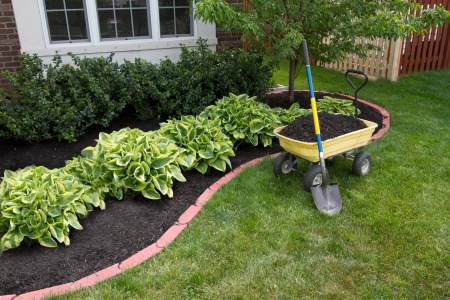5 Essential Home Composting Tips: A Beginner’s Guide to Eco-Friendly Gardening
Composting is one of the simplest and most effective ways to reduce waste, nourish your garden, and help create a healthier planet. By turning everyday scraps into nutrient-rich soil, composting transforms your waste into a valuable resource. Whether you’re a first-timer or looking to refine your composting skills, these five essential composting tips will guide you toward a more sustainable and successful composting journey.

1. Choose the Right Location
The location of your compost bin or pile is critical for its success.
- Find the Perfect Spot: Look for an area that gets partial sunlight, offers good drainage, and is easily accessible. While compost needs warmth, too much direct sunlight can dry out your pile.
- Consider Air Circulation: Proper airflow is essential for decomposition, so avoid cramped or enclosed spaces.
- Keep Pests at Bay: Place your compost bin at a distance from your home to prevent attracting pests like raccoons. If pests are a concern, choose a bin with a lid or sturdy enclosure.
Your compost location should balance convenience and functionality, making it easy to add materials and maintain.
2. Gather the Right Materials
Successful composting requires the right mix of greens (nitrogen-rich materials) and browns (carbon-rich materials).
- Greens Include:
- Fruit and vegetable scraps
- Coffee grounds and filters
- Grass clippings
- Browns Include:
- Dry leaves
- Straw
- Shredded cardboard or newspaper
The ideal ratio for composting is about 3 parts browns to 1 part greens. Think of it as layering a delicious torte: start with browns, add greens, and repeat.
Pro Tip: Got extra leaves from fall yard cleanup? Create leaf mold bins to enrich next season’s compost. Check out detailed instructions from 104 Homestead.
3. Invest in a Suitable Container
A good compost container can simplify the process and help maintain a tidy yard.
- Options to Consider:
- Compost Bins: Ideal for controlling odors and keeping pests out. Choose one with a lid and proper ventilation.
- Tumblers: Great for quick decomposition as they simplify turning, but their capacity may be limited.
- DIY Options: Build a bin from untreated wood pallets. Drill them together for a functional, free, and well-ventilated composting solution – voila you have DIY compost bins!
Each container type has its pros and cons, so choose what works best for your space and composting goals.
4. Know What to Compost (And What to Avoid)
Knowing what you can—and cannot—compost is essential for keeping your pile healthy and productive.
What to Compost
- Fruit and vegetable scraps
- Coffee grounds and filters
- Eggshells
- Yard waste (leaves, grass clippings, small branches)
- Shredded cardboard and newspaper
- Plant trimmings
- Herbivore manure (e.g., cow, horse, rabbit)
- Dryer lint (from natural fibers)
What to Avoid
- Meat and dairy products (they attract pests and create odors)
- Greasy or oily foods
- Pet waste (from carnivorous animals)
- Diseased plants
- Treated wood, glossy paper, or plastics
Helpful Rhyme:
“Greens are good, they make it hum,
Veggies, coffee, and leaves from the sun.
But no meat, no cheese, they won’t decay,
Greasy stuff and plastic, keep ’em away.”
5. Maintain and Monitor Your Compost
Once your compost pile is up and running, it needs regular care to thrive.
- Turn or Mix Regularly: Turning your pile every few weeks aerates the compost, speeding up decomposition and preventing odors.
- Maintain Proper Moisture: Your compost should feel like a wrung-out sponge. If it’s too dry, add water; if it’s too wet, mix in more browns like shredded leaves or cardboard.
- Monitor Temperature: Use a compost thermometer to ensure your pile reaches the ideal temperature range of 130°F to 160°F. This heat kills pathogens and weed seeds while promoting efficient decomposition.
When your compost becomes dark, crumbly, and smells earthy, it’s ready to use in your garden. Spread it on flower beds, mix it into vegetable gardens, or use it as a top dressing for trees and shrubs.
Why Composting Matters
Composting isn’t just about reducing waste—it’s about creating a closed-loop system where natural materials are recycled into soil-enhancing compost. This practice:
- Reduces Landfill Waste: Organic matter accounts for 30% of landfill waste. Composting diverts this material, reducing methane emissions from landfills.
- Improves Soil Health: Compost enriches soil with nutrients, improving its structure, water retention, and fertility.
- Supports Sustainable Gardening: By composting, you reduce the need for synthetic fertilizers and promote a healthier ecosystem.
How Pigybak Can Help with Composting
If setting up a compost system or dealing with seasonal yard waste feels overwhelming, Pigybak can simplify the process:
- Post Your Composting Needs: Whether you need help setting up bins, collecting leaves, or turning your compost pile, Pigybak connects you with top-rated local contractors.
- Collaborate with Neighbors: Team up with neighbors to share costs for yard waste collection or composting services. Pigybak’s Neighborhood Savings feature helps you save while supporting your community.
- Eco-Friendly Focus: Pigybak prioritizes sustainability, making it easy to find contractors who share your commitment to greener practices.
Sign up for Pigybak today and kick-start your composting journey with expert help and neighborly collaboration.
Conclusion: Start Composting Today
Composting at home is a simple, rewarding way to reduce waste, improve your garden, and contribute to a healthier planet. By choosing the right location, balancing your materials, investing in a suitable container, and maintaining your compost, you’ll create rich, nutrient-filled soil that benefits your garden and the environment.
Whether you’re composting kitchen scraps, creating leaf mold, or simply exploring sustainable gardening practices, every small effort makes a big difference. And if you need a little help along the way, Pigybak is here to connect you with resources and professionals to get the job done.
Happy composting—and here’s to a greener future for your garden and community!


